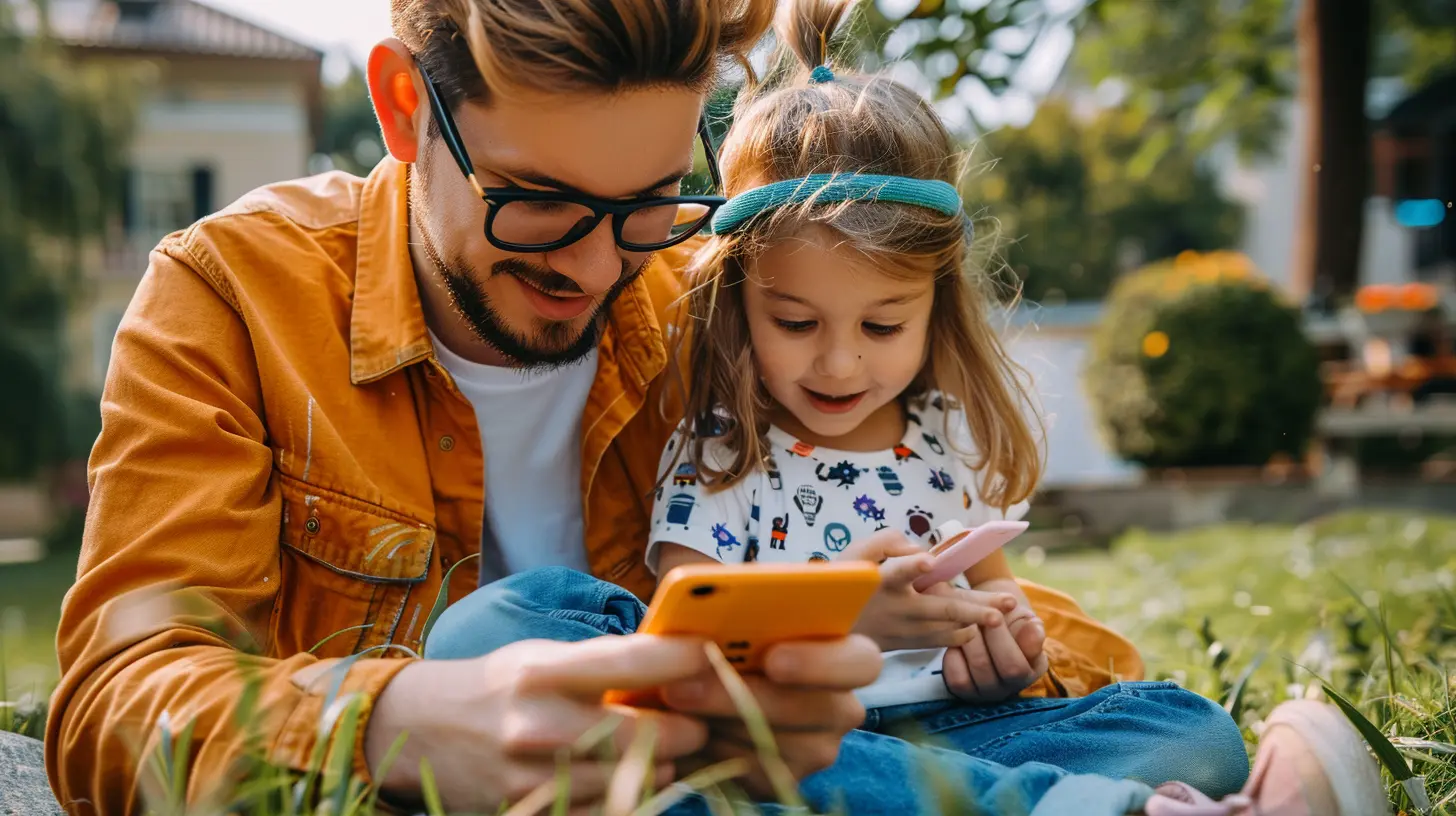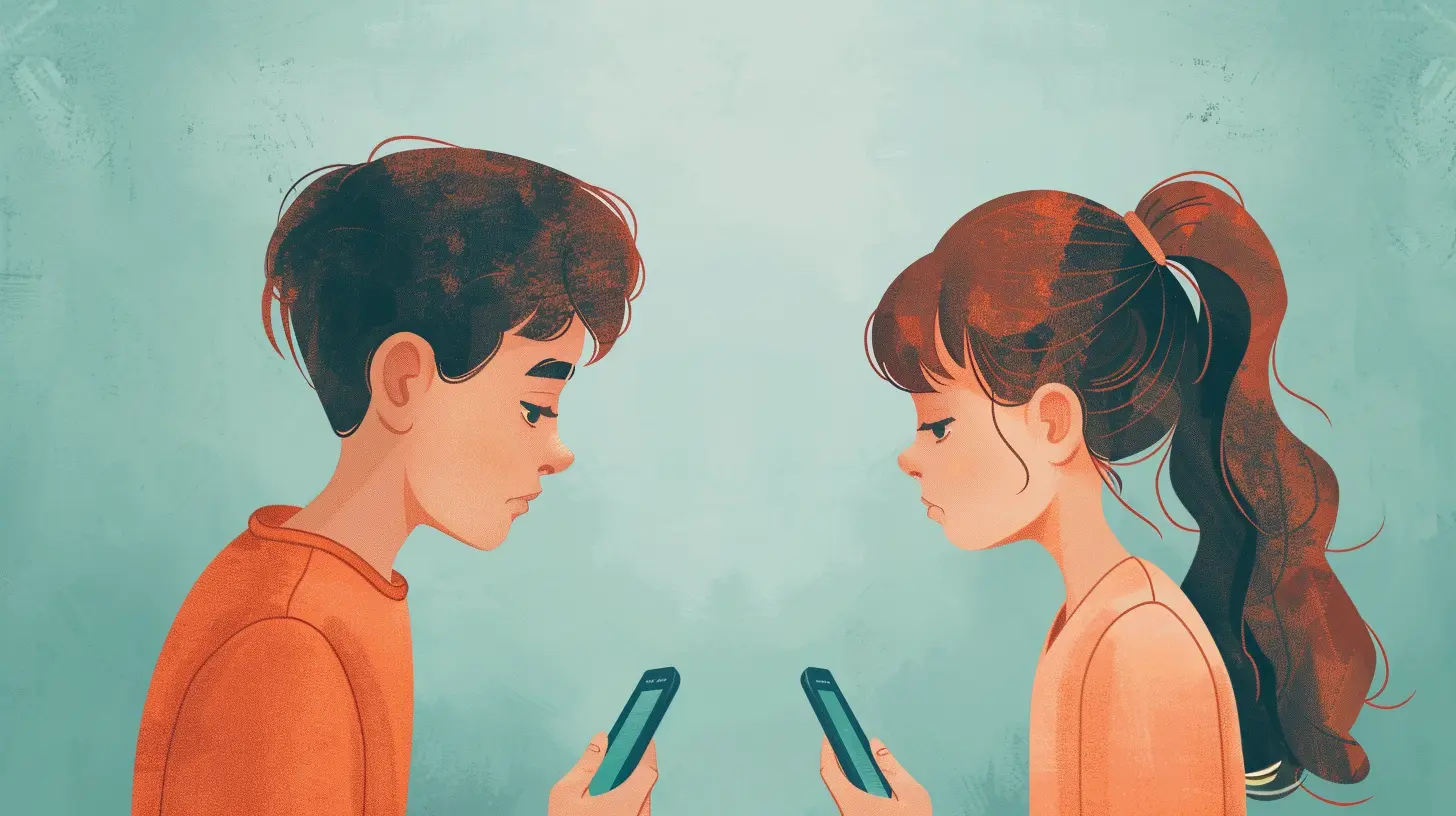Parental Control Apps: What Parents Need to Know
7 September 2025
There’s no road map for parenting in the digital age — it’s like trying to navigate a jungle with a paper map while your kids are already flying drones through the treetops. From social media buzz to YouTube rabbit holes, kids are swimming in content 24/7. And us? We're just trying to keep them safe without hovering like helicopters. That’s where parental control apps swoop in like your digital co-pilot.
Let’s have an honest heart-to-heart about what these apps really do, how they work, and how they can bring a bit of peace to our screen-filled world.
📱 What Are Parental Control Apps Anyway?
Parental control apps are like the invisible seat belts on your child's digital rides. They’re tools you install on a phone, tablet, or computer to monitor, limit, or filter what your child can do online. Think of them like a third eye—watching what content your child interacts with, how much time they’re clocking in front of screens, and who they’re chatting with.This isn’t about being Big Brother. It’s about being a guiding hand—like training wheels for online behavior.
🌐 Why Do Parents Need Parental Control Apps?
Let’s face it—our kids are digital natives, but they still need digital guardians. While the internet is packed with useful, fun, even magical tools, it's also home to some pretty dark corners.From cyberbullying and inappropriate content to online predators and screen addiction, the risks are real.
So, why exactly do you need these apps? Here’s the scoop:
- To Monitor Activity: Know what your kids are doing, without them feeling interrogated.
- To Filter Harmful Content: Keep adult content, violence, and explicit language out of your child’s reach.
- To Set Screen Time Limits: Ever felt like prying a tablet from your kid’s hand could spark WWIII? These apps help with that.
- For Peace of Mind: Because nothing beats sleeping easy knowing your child is safe online.
🔍 Features You Should Look for in a Parental Control App
Not all apps wear capes. Some are clunky. Others are downright confusing. The best ones are intuitive, secure, and packed with features that actually make sense. Here are the absolute must-haves:✅ 1. Content Filtering
The holy grail of parental control. This feature scans and blocks access to sketchy websites, mature content, and explicit videos.Pro Tip: Look for apps that allow you to customize the filters based on your child’s age.
✅ 2. Screen Time Management
Because let’s be real—the iPad babysitter is only helpful until it becomes a full-time addiction. With time management tools, you can set healthy limits and even schedule downtime (like bedtime or school hours).✅ 3. App Blocking
Is TikTok gobbling up your kid’s attention span? Block it or limit its use. The best apps let you pick and choose what’s accessible and when.✅ 4. Location Tracking
Every parent’s dream and every teen’s nightmare. A reliable GPS feature helps you know where your child is in real-time. Bonus if it includes geofencing — alerts when they enter or leave specific zones.✅ 5. Call & Text Monitoring
Some apps allow you to see who your child is communicating with and block unknown or shady numbers.✅ 6. Activity Reports
Get daily or weekly breakdowns of your child’s digital habits. It’s like a report card—but for screen time.
🧒 Are Parental Control Apps Really Necessary?
Short answer? Yes.Long answer? Still yes.
Let’s back up. You wouldn’t let your kid roam through a crowded city alone, right? Smartphones and tablets are digital cities — filled with alleyways, strangers, and content that isn’t age-appropriate.
We’re not saying you should spy on your kids. We're saying you should guide them. Parental control apps offer oversight without overstepping. They let you teach responsible online behavior while still protecting them from the stuff they shouldn’t see.
It’s less about control, more about conversation.
💡 How To Talk to Your Kid About Using a Parental Control App
Now, this is the tricky part. How do you tell your kid you’re installing what’s essentially a digital watchdog?Here’s the key: don’t ambush them.
Sit down. Be honest. Talk about safety, trust, and why you want to use the app—not because you don’t trust them, but because you don’t trust the internet.
Use phrases like:
- “It’s my job to keep you safe—even online.”
- “Let’s build trust while also setting smart boundaries.”
- “I want to help you learn to navigate the internet the right way.”
Make it a team effort. If they feel heard, they’re way more likely to accept it.
🚫 What Parental Control Apps Can’t Do
Just like you can’t bubble wrap your kid and send them out into the world, parental control apps aren’t magic shields. Here’s what they can’t do:- They can’t parent for you.
- They can’t teach values or empathy.
- They won’t replace open communication.
- They can be bypassed by tech-savvy teens.
So, think of these apps as one layer of protection—not the whole armor.
✅ Best Parental Control Apps for 2024
With so many apps out there, it’s easy to get overwhelmed. Here’s a quick breakdown of the top-rated players in the game:🛡️ Qustodio
- Excellent activity reports- Customizable web filters
- Works across Android, iOS, Windows, and macOS
🔒 Bark
- Scans messages, emails, and social media for red flags- Sends real-time alerts for cyberbullying or predatory behavior
📍 Life360
- Primarily for location tracking- Lets you track family members and get real-time alerts
📲 Norton Family
- Helps manage screen time effectively- Strong on filtering and supervision tools
🧠 Google Family Link
- Best for younger kids and Android users- Lets you manage app installs, filter content, and track activity
Tip: Always try the free version or trial first. Not every app fits every family.
🧩 Balancing Safety and Freedom
Here’s the tightrope walk: keep your child safe without pulling the reigns too tight. Kids need room to make mistakes, learn, and grow. But they also need guardrails — sort of like bumpers in a bowling alley.Parental control apps are those bumpers.
Use the tools, but also use your heart. Listen more. Judge less. Guide often.
❤️ Final Thoughts: It’s Not About Spying—It’s About Trust
Parenting today isn’t for the faint of heart. We’re raising kids in a world we never grew up in. They scroll before they crawl, and they FaceTime before they can write in cursive. It’s wild.But here’s your superpower: knowledge. Knowing what’s out there, what tools exist, and how to use them makes all the difference.
Parental control apps aren’t about creating a prison—they're more like putting up digital fences. We’re not limiting our kids; we’re giving them safe space to explore.
So go ahead, take the plunge. Get informed. Pick a tool. Start the conversation.
And remember—nothing beats a connected parent with a smart plan.
📘 FAQs: Quick Answers About Parental Control Apps
Q: At what age should I start using parental control apps?A: As soon as your child starts using a device solo. Even as early as age 5.
Q: Will my child know if I’ve installed a parental control app?
A: Most apps are transparent. And it’s better if they know—honesty builds trust.
Q: Do these apps work on Wi-Fi and mobile data?
A: Yes, the good ones track and filter regardless of the connection type.
Q: Can tech-savvy teens bypass these apps?
A: Some might try. That’s why conversation and trust are just as important as any app.
Q: Are parental control apps expensive?
A: Many have free versions, but premium features often come with a subscription fee.
all images in this post were generated using AI tools
Category:
Tech And KidsAuthor:

Noah Sawyer
Discussion
rate this article
1 comments
Kylie McElhinney
Excited to learn how parental control apps can balance safety and independence for kids!
September 13, 2025 at 4:43 PM

Noah Sawyer
Thank you! Finding the right balance is essential, and parental control apps can be a valuable tool for fostering both safety and independence in kids.


